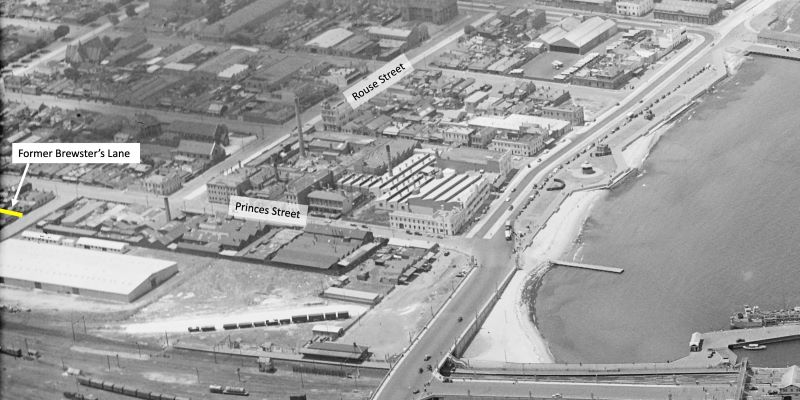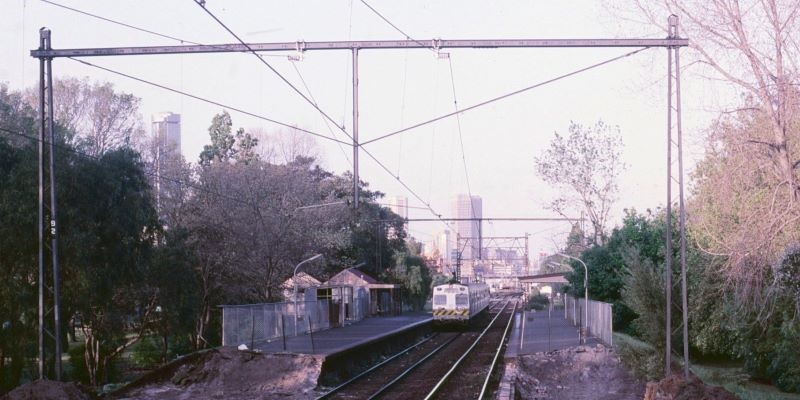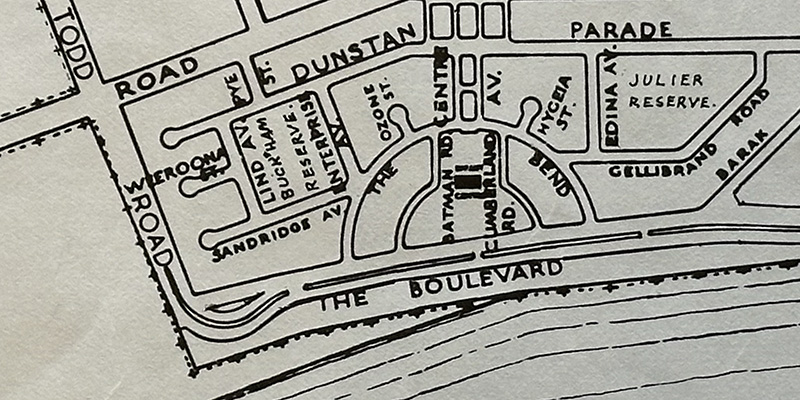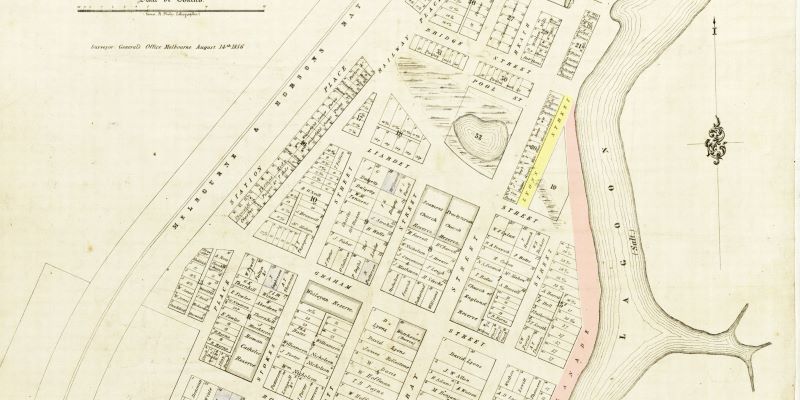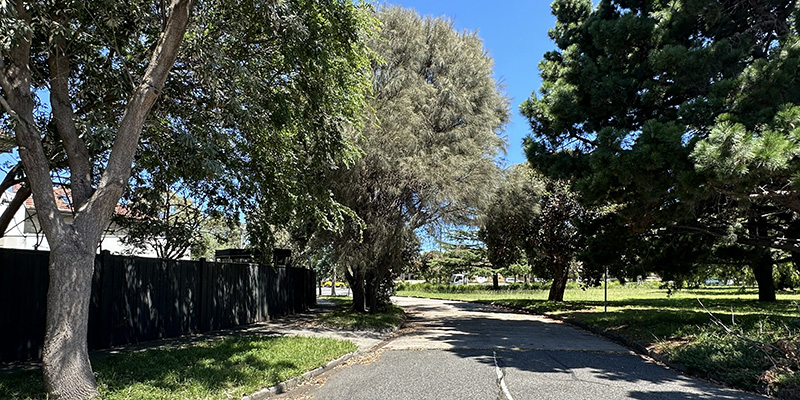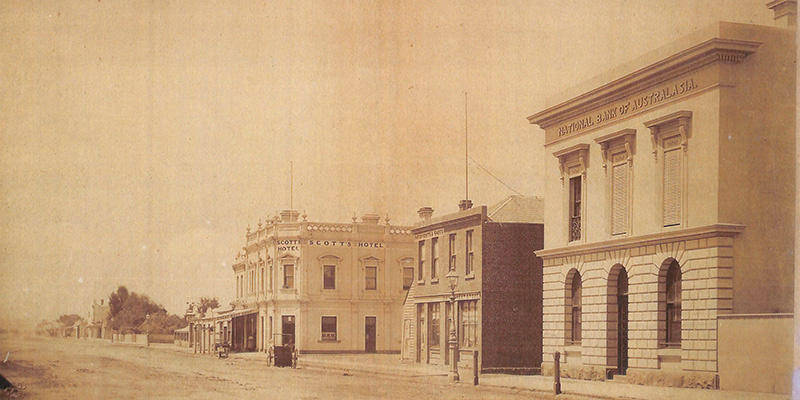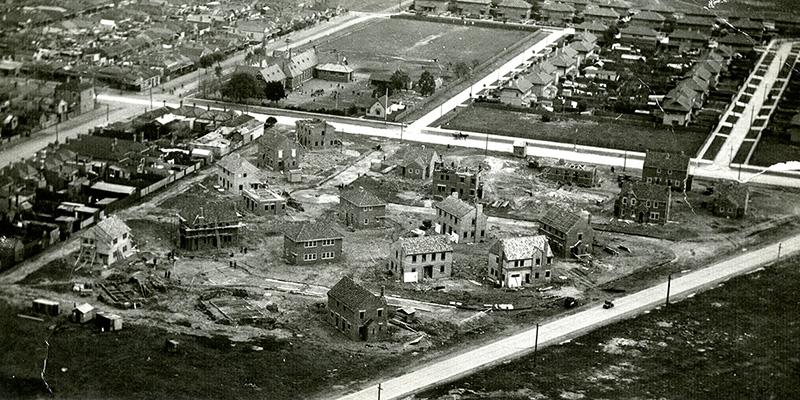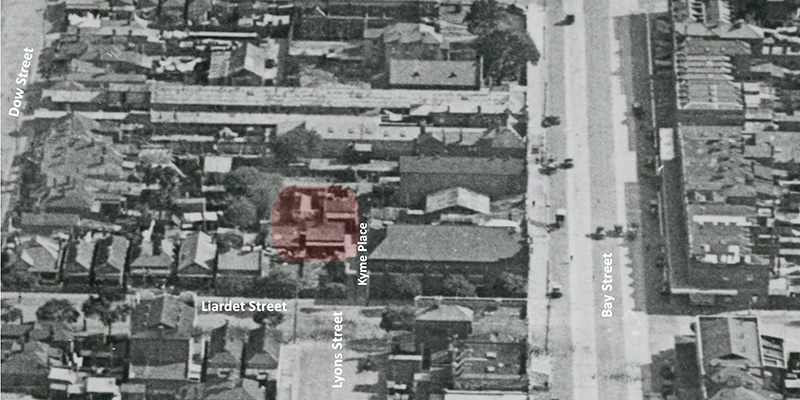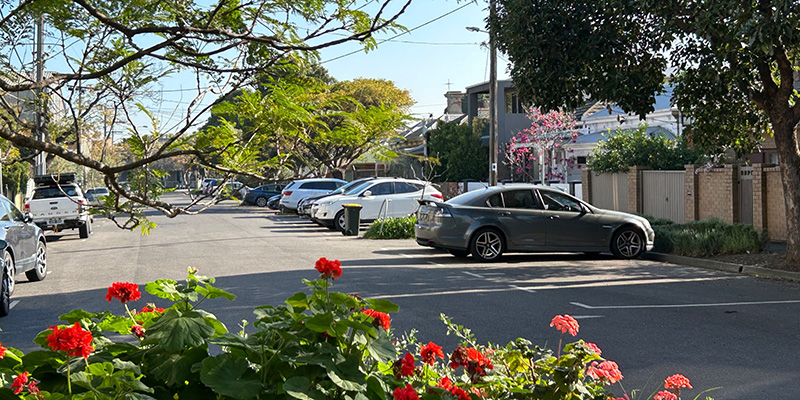by David F Radcliffe
Brewster’s Lane disappeared from Port Melbourne twice. First, it was erased from local memory after the name of this small roadway changed in 1889. A century later, all traces of the laneway were lost when the area was redeveloped. The aerial photograph below shows the location of the former Brewster’s Lane.
Former Brewster's Lane (1946), State…
